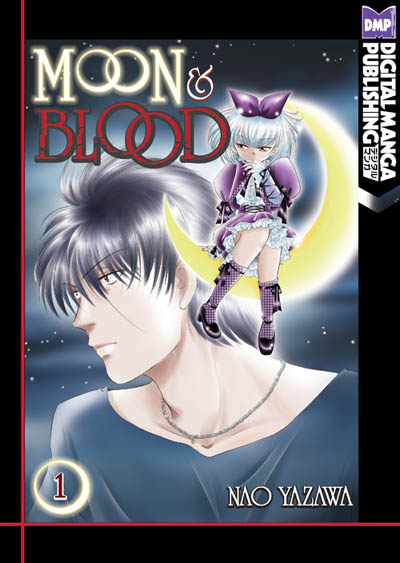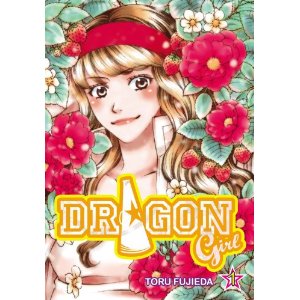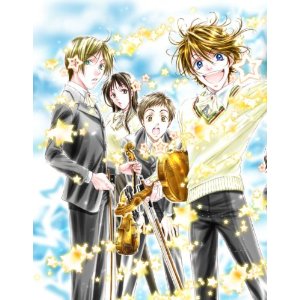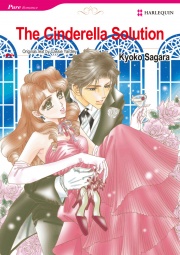Here are my picks for manga to give to people this holiday season! Here’s my guide from last year, in case you’re curious about my previous picks.
We’re lucky to be living in an age of awesome omnibus editions, and I think they make awesome gifts for manga fans. The books on this list are suitable for teens and adults, I didn’t read a ton of all ages manga this year.
For the fan of classic shoujo:
I don’t think it gets much better than the Dark Horse Clamp Omnibus releases. Some of the more recent Clamp series leave me a little cold, but it is hard to recapture the charm and whimsy of the original Cardcaptor Sakura. With plenty of outfit changes, a tarot card-inspired magical quest, and puppy-love crushes popping up everywhere, Cardcaptor Sakura is a must read for any fan of shoujo fantasy. I tend to be merciless about culling my collection if I have older volumes when I know I’m going to buy the same manga in a deluxe edition, so I don’t have my old stray volumes of the original Tokyopop release. I can’t compare the old and new translations, but I do appreciate the great paper quality of the new Dark Horse edition, as well as all the bonus color illustrations included in this volume. I’m looking forward to collecting the rest of this series.
Itazura na Kiss came out last November, but I didn’t read it until 2010 so I’m including it in this gift guide. The dim-witted heroine with lots of heart is a shoujo staple, and sometimes such a cliched character type can be a little annoying. However, one of the reasons why so many lazy mangaka turn to this character type is the classic and hilarious portrayal of Kotoko in Itazura Na Kiss. Kotoko’s hopeless and all-consuming love for the epitome of Japanese eliteness Irie inspires sympathy in me as opposed to resignation. Kaoru Tada surrounds her odd couple with a large and hilarious supporting cast, making Itazura Na Kiss much more interesting than you might think for a story that follows the romance of a nice but simple girl and her chosen snobbish but intelligent guy.
For the shoujo fan who has everything:
One of my pleasant discoveries late in the year was the omnibus edition of Toru Fujieda’s Dragon Girl. I enjoyed her series Oyayubihime Infinity from CMX, and Dragon Girl makes a slightly goofy premise (girl infiltrates a traditional Japanese cheering club) much more enjoyable than you might think. Rinna’s relentless pursuit of excellence in cheering and total lack of embarrassment even as some of her classmates attempt to pick on her are admirable, and Fujieda manages to create an interesting reverse harem story with plenty of humor. I’m looking forward to the second and concluding volume when it comes out later in the year, and I think the double omnibus edition will make a great addition to any fan of silly shoujo. I haven’t seen this title get as widely reviewed as other shoujo titles recently, so this is my under the radar new shoujo pick.
For the alternative comic fan:
If you know someone who tends to prefer alternative or indie comics, there are some manga out there that should appeal to them. Tops on the list is the Top Shelf anthology AX Volume 1. My full review is here, but the short version is that AX is a carefully curated anthology that gives the reader a new appreciation of the variety of storytelling and art styles that come out of the alternative comics scene in Japan. This would also be a great gift for the manga fan that appreciates volumes that fill in their knowledge of the history and development of the art form.
Other options would be almost anything from Viz’s Sigikki line which is filled with unique storytelling and distinctive art styles. My current favorites from this line are Children of the Sea, Afterschool Charisma, and House of Five Leaves. I think House of Five Leaves, with its slice of life account of a diffident ronin accidentally falling into a life of crime might appeal most to indie comic fans who are open to trying out some manga.
Fans of craziness in comic form – post apocalyptic sci-fi seinen version:
I’ve only read one volume of Biomega and I mean to track down the rest of the series at some point. However just from reading the first volume I wouldn’t hesitate recommending the title to anyone with a sense of humor who enjoys dark twisted science fiction. Tsutomu Nihei’s vision of the future is filled with stylish zombie fighters, abandoned places with interesting architecture, and a talking bear with a machine gun. I don’t think it gets much better than that. I can’t say that Biomega was terribly coherent, but the gorgeous art, creepy zombies, and the aforementioned talking bear with the machine gun goes a long way in satisfying me as a reader. Also: talking bear with machine gun.
Fans of craziness in comic form – cracktastic fantasy shoujo eye-candy version:
This was a really good year for shoujo. But the new series that immediately captured my attention was Demon Sacred, Natsumi Itsuki’s manga about mystical creatures from another dimension that manifest as unicorns and dragons, then take the form of super-hot idol singers when bonded to teenage girls. Add in the medical mystery surrounding the reverse-aging disease called Return Syndrome, a hot genius scientiic researcher, and angsty twin girls and you get one of the most genuinely crazy shoujo plots that I’ve seen since Moon Child. Priced at $5.99, it would be easy to pick up the first couple volumes for any fan of loopy shoujo series. While the first volume of Demon Sacred was a little dense, by the second volume I had given myself over to the craziness and I am eagerly looking forward to the third volume which is coming out at the end of the month, because I need another hit. Nope, this series isn’t addicting at all!
Shonen manga of the year:
I didn’t expect that I’d love Cross Game so much, but this slice-of-life story about a young baseball prodigy touches on issues kids face as they grow up with the baseball serving only as a backdrop. As the characters age and move up in school, they face challenges that go beyond just the baseball field. Ko is an engaging hero, and I’m genuinely curious to find out how he and his friends deal with the corrupt baseball coach at their high school. The three volume omnibus helps compensate for the slightly slow start to the series, but I appreciated being able to read a sports manga that showed time gradually passing for the characters.
Box Sets
Box sets might not be useful for established manga fans, but for newer fans who might not have collected the volumes yet, they could be a great way to get someone hooked.
Death Note Box Set (Vol. 1-13)
Vampire Knight Box Set
Fruits Basket, Vols. 1-4
As for what’s on my wish list, I’d probably want to fill in the gaps in some of the Viz signature series where I don’t have all the volumes, like getting the rest of Biomega, snagging volumes 2 and 3 of Children of the Sea, and the second volume of House of Five Leaves.
Happy Manga Shopping!






